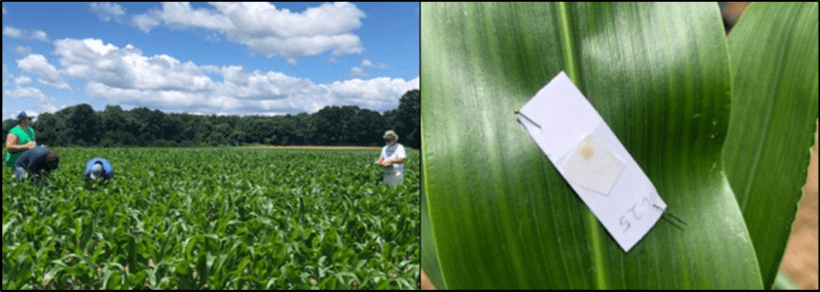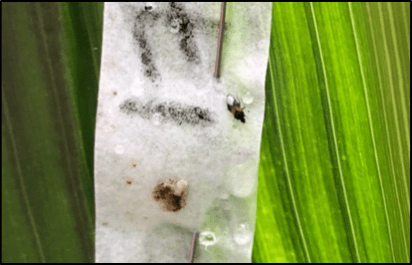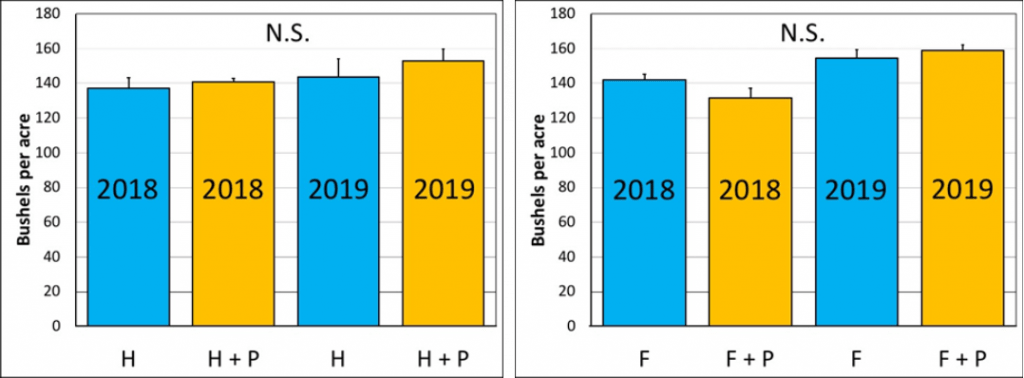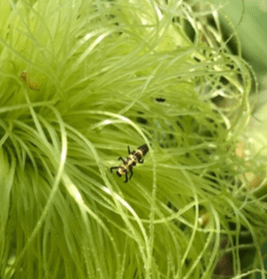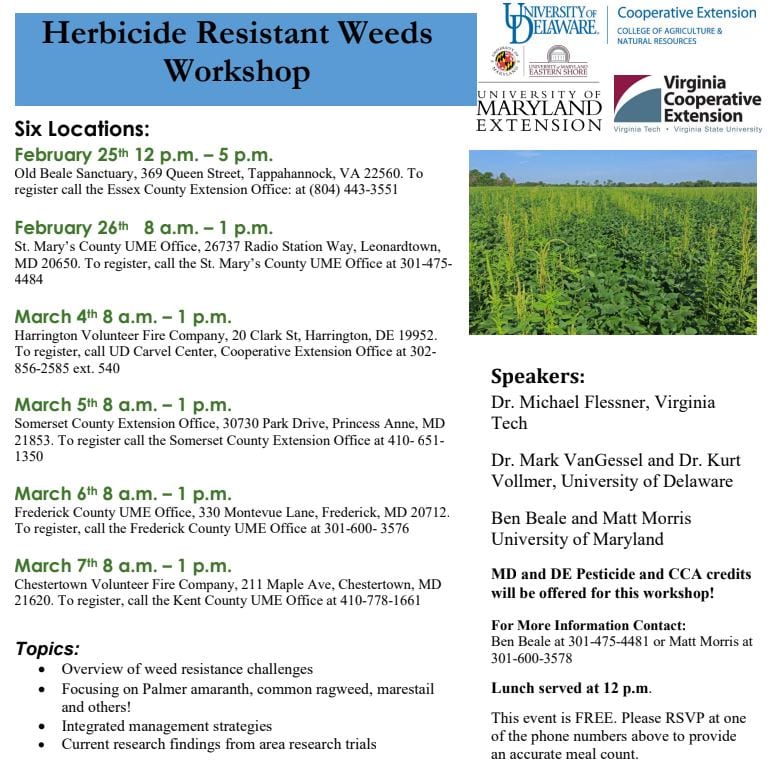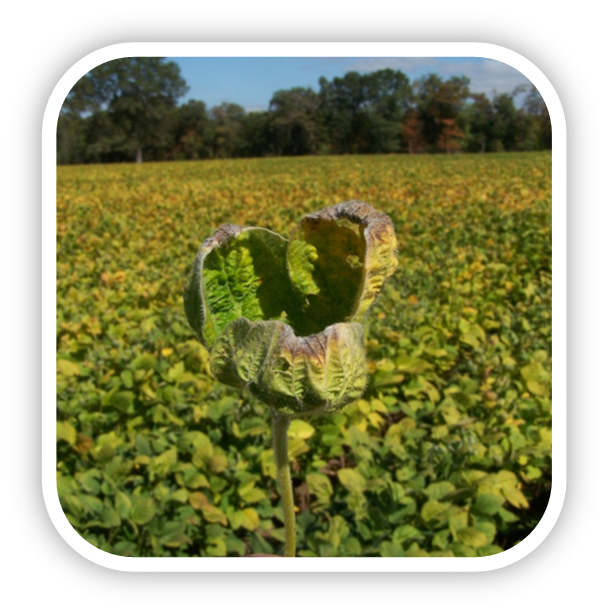Dr. Amanda Grev, Pasture & Forage Specialist
University of Maryland Extension
As things are greening up this spring, you may notice a few not-so-friendly plants popping up around your fields, especially given the milder weather this past winter. If you haven’t already done so, now is the time to scout your pastures and hayfields in search of winter annual and biennial weeds. When it comes to weed control, timing of herbicide application is critical and it is important to spray when weeds are most susceptible to achieve maximum effectiveness.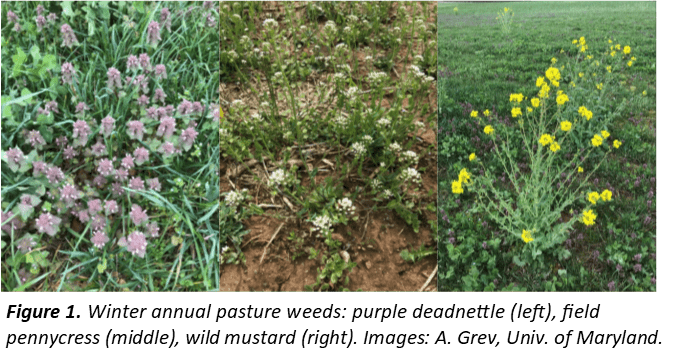
Winter annuals typically germinate in the fall, overwinter, and complete their reproductive cycle in the spring or early summer. Common winter annual species include chickweed, purple deadnettle, field pennycress, henbit, horseweed/marestail, shepherd’s purse, and the mustard species. Annuals are best controlled during the seedling and early vegetative stage when they are young and actively growing. Herbicide applications will be more effective if made at this stage while they are still vegetative and more susceptible and will prevent them from flowering and producing seed. At this time of year, these winter annuals are growing rapidly and have already or will soon begin to flower and set seed. If the winter annuals in your fields have moved beyond this stage, an application may offer some control but you may also want to take note of those weedy areas now and target them later this year with a late fall application.
Biennials live for two growing seasons, with the first year consisting of only vegetative growth as a seedling and rosette and the second year consisting of vegetative growth and also reproductive growth in the form of an elongated flower stalk. Common biennial species include burdock, bull thistle, musk thistle, and wild carrot. These weeds are best controlled during the seedling and rosette stage, and should be treated now while they are smaller and more susceptible and before they begin to bolt.
There are a number of herbicides available for control of broadleaf weeds. Herbicide selection should be based on the type of forage and weed species present. The most common herbicides used for control of broadleaf weeds in grass hay or pasture are the plant growth regulator herbicides, which includes products containing 2,4-D, dicamba, triclopyr, aminopyralid, picloram, or a mix of these (see the table below for a list of common products). These products are safe if applied to grass forages at the labeled rates but can kill or injure desirable broadleaf forages (i.e. clover) in grass-legume mixed pastures.
If weedy annual grasses such as crabgrass, foxtail, panicum, and Japanese stiltgrass are problematic, pendimethalin (Prowl H2O) now has a supplemental label that allows for its use on established perennial pastures or hayfields grown for grazing, green chop, silage, or hay production. It may be applied to perennial grass stands or alfalfa-grass mixed stands. Prowl H2O may be applied as a single application in the early spring, or for more complete control it can be applied as a split application with the first application in early spring and the second application after first cutting. Keep in mind, this herbicide is a pre-emergent herbicide, meaning it will only control weeds if applied prior to germination. If soil temperatures in your area are already above 50°F it is likely that crabgrass and stiltgrass has already germinated, but a split application of Prowl H2O now and after first cutting can help control foxtail. There are currently no herbicides labeled to control emerged weedy grasses in grass stands or alfalfa/grass mixes.
Note that if forages were recently seeded and are not yet established many of these herbicides can cause severe crop injury. Most herbicide labels for cool-season perennial grasses state that the grasses should be well established with at least 4-5 inches of growth, although some labels are more restrictive than this. In addition, some of these herbicides have haying or grazing restrictions following application. Always read and follow the guidelines listed on the product label for proper rates, timing, residual effects, and any grazing or harvest restrictions following application.
Lastly, remember that while herbicides can be a useful tool for weed management in pastures and hayfields, they are not the only option for weed control. A program that integrates several different control strategies is generally more successful than relying on a single method. For maximum results, include cultural practices such as selecting adapted species and maintaining optimum soil fertility, mechanical practices such as timely mowing or clipping to suppress weed seed production, and biological practices such as utilizing livestock for controlled grazing or browsing. And remember that weeds are opportunistic; the best method for weed control is competition with a healthy, dense stand of desirable forage species.
| Product | Active Ingredients | Application Rate* | General/Restricted Use |
| 2,4-D | 2,4-D | 1 to 2 qt/A | General |
| Banvel/Clarity | dicamba | 0.5 to 2 pt/A | General |
| Crossbow | 2,4-D + triclopyr | 1 to 6 qt/A | General |
| GrazonNext HL | 2,4-D + aminopyralid | 1.2 to 2.1 pt/A | General |
| Grazon P+D | 2,4-D + picloram | 2 to 8 pt/A | Restricted |
| Milestone | aminopyralid | 3 to 7 fl. oz/A | General |
| PastureGard HL | triclopyr + fluroxypyr | 0.75 to 4 pt/A | General |
| Prowl H2O | pendimethalin | 1.1 to 4.2 qt/A | General |
| Remedy Ultra 4L | triclopyr | 0.5 to 4 pt/A | General |
| Stinger | clopyralid | 0.7 to 1.3 pt/A | General |
| Surmount | picloram + fluroxypyr | 3 to 6 pt/A | Restricted |
| WeedMaster | 2,4-D + dicamba | 1 to 4 pt/A | General |
*For use in established grass pasture or hayfields
